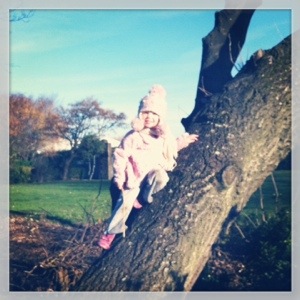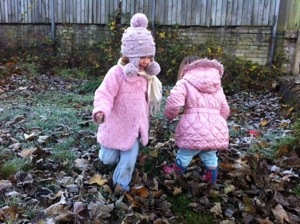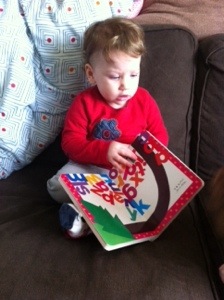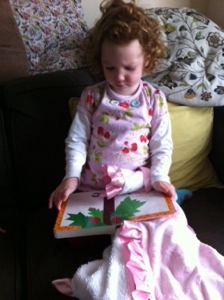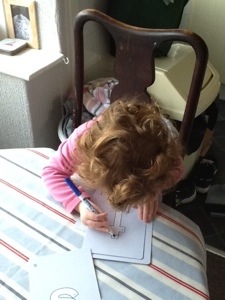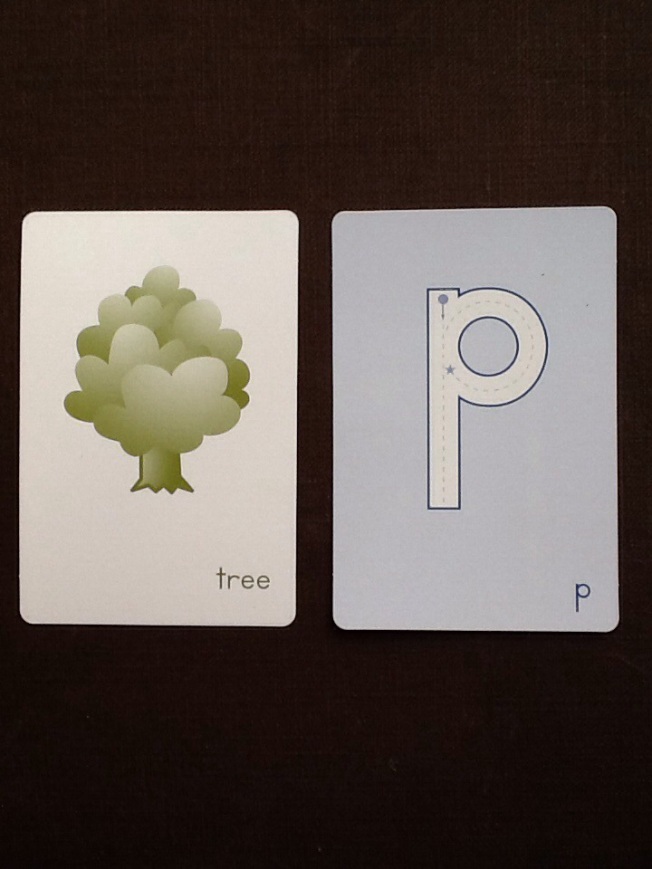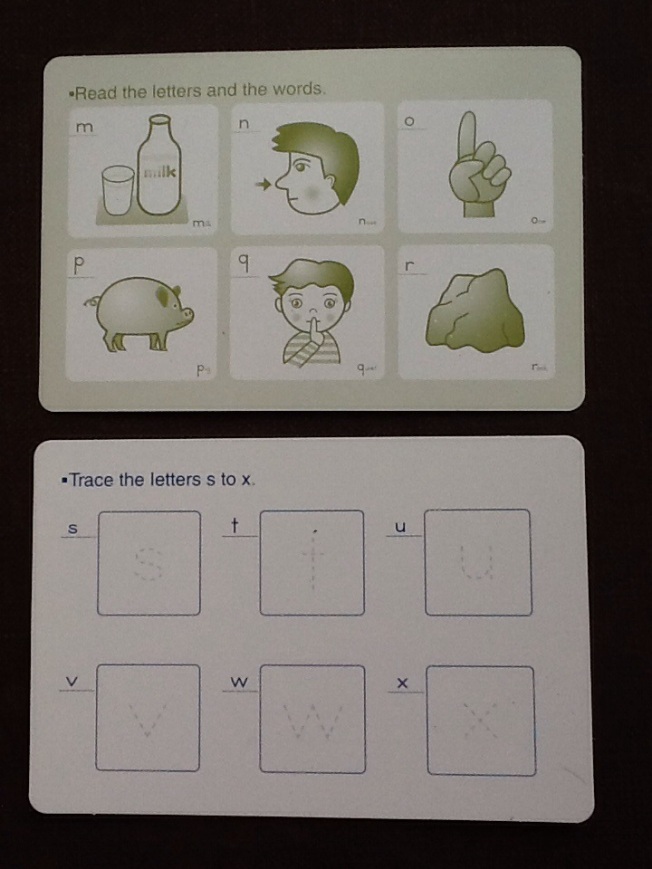Children benefit from daily interaction with nature; this is a proven fact! In today’s modern world, family life has changed. Children watch more television, play more video games and overall, spend more time indoors then they used to, say 50 years ago. We live in an increasingly dangerous world where playing on the streets is a thing of the past. Parents have to work more because of the decaying economical climate and children have to stay in because it isn’t safe anymore. So what can we do as parents?
I must admit, I don’t have enough time to take my girls on adventurous expeditions to beautiful landscapes everyday. But I do have spare moments to take them to the local park. In fact, today we went to the park and ended up spending more time playing in leaves and bushes then actually going on slides and swings. It was a run down area behind the park, with overgrown bushes and forgotten leaf piles, that intrigued my toddler and her little friend. They investigated leaves, picked up sticks, trudged through brambles and laughed with pink cheeks that glowed!
So what are the benefits of daily time in nature?
Daily exposure to diverse natural settings:
1. Supports the multiple intelligences
Children develop intellectually, emotionally, physically, socially and spiritually from being allowed the freedom to explore their environment.
2. Supports creativity and problem solving
Children tend to engage in more creative and cooperative play when in green areas.
3. Enhances cognitive abilities
If children are near nature, can see nature or experience nature daily, it can increase their ability to focus and enhance their thinking ability.
4. Improves academic performance
Studies have shown that children who go to ‘green’ schools improve in their overall test scores.
5. Increases children’s physical activity
Children who are exposed to diverse natural settings are more active, are more aware of nutrition are more civil to one another and more creative.
6. Improves nutrition
Children who experience nature regularly are more likely to eat nutritious foods, especially if they are part of the growing process; show higher levels of understanding of nutrition, and are more likely to continue eating healthily throughout their lives.
7. Improves social skills
Children are more likely to have better social skills if allowed the freedom to have unstructured play with others in nature.
8. Improves self-discipline
Access to natural settings enhances children’s peace, self-control and self-discipline.
9. Reduces stress
The colour green is known to be a relaxing and tranquil colour. Children who are exposed to natural settings are calmer and less stressed.
The ultimate goal of every parent is to raise happy, healthy children. Exposure to nature is one way we can help them on their life long journey towards these goals.
